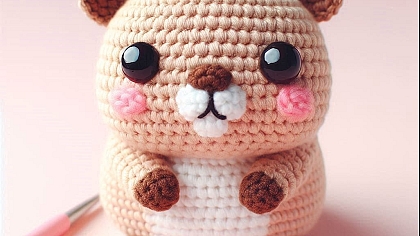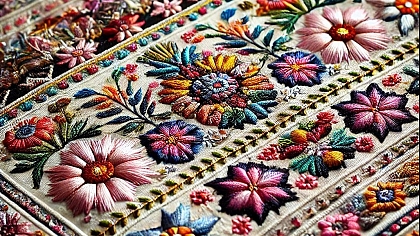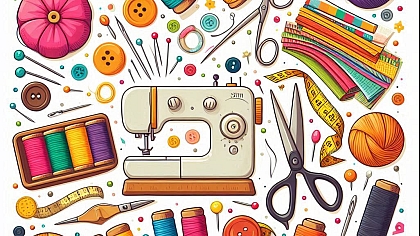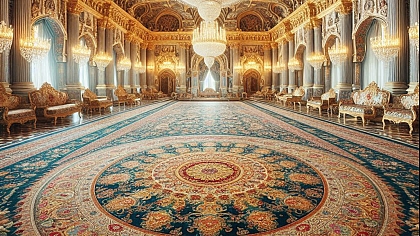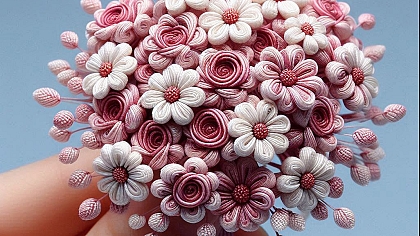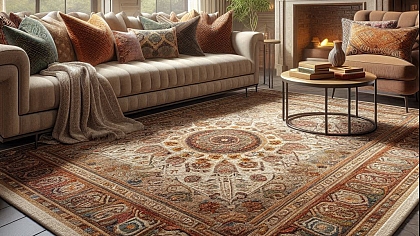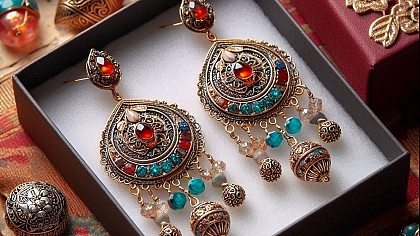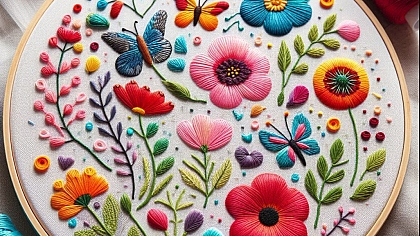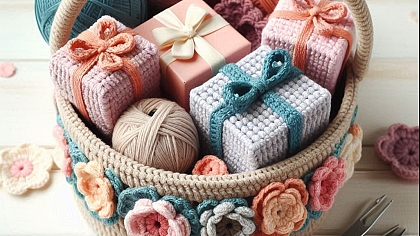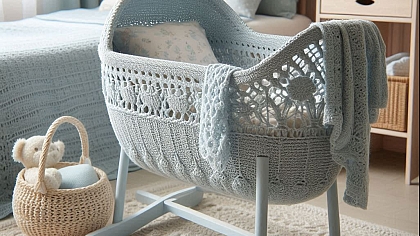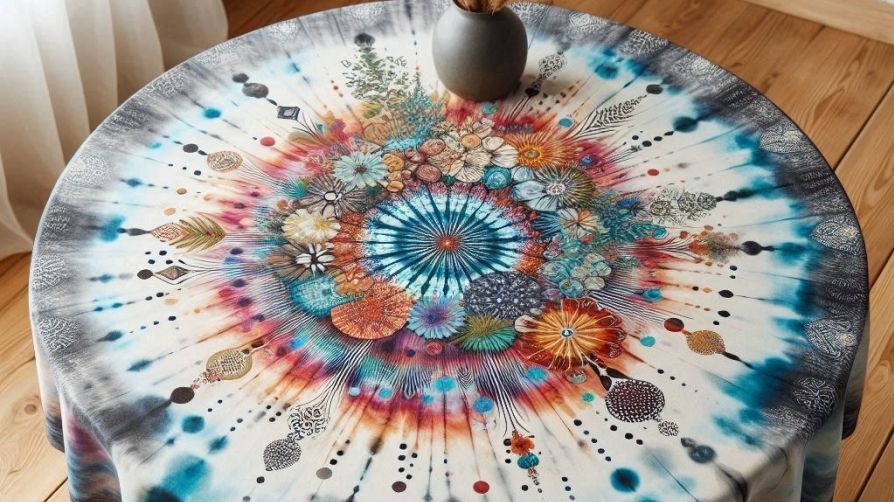
Colour and Texture: Designing with Weaving
Weaving, one of the oldest forms of textile creation, intertwines both tradition and innovation. The art of weaving, often seen as a rhythmic dance between warp and weft, is a testament to human ingenuity. Its significance spans cultures and centuries, shaping not just garments and textiles but the very fabric of our history. Today, weaving continues to be a vital mode of expression for designers and artists alike, where the elements of colour and texture play pivotal roles in bringing their creative visions to life.
The Foundation of Weaving
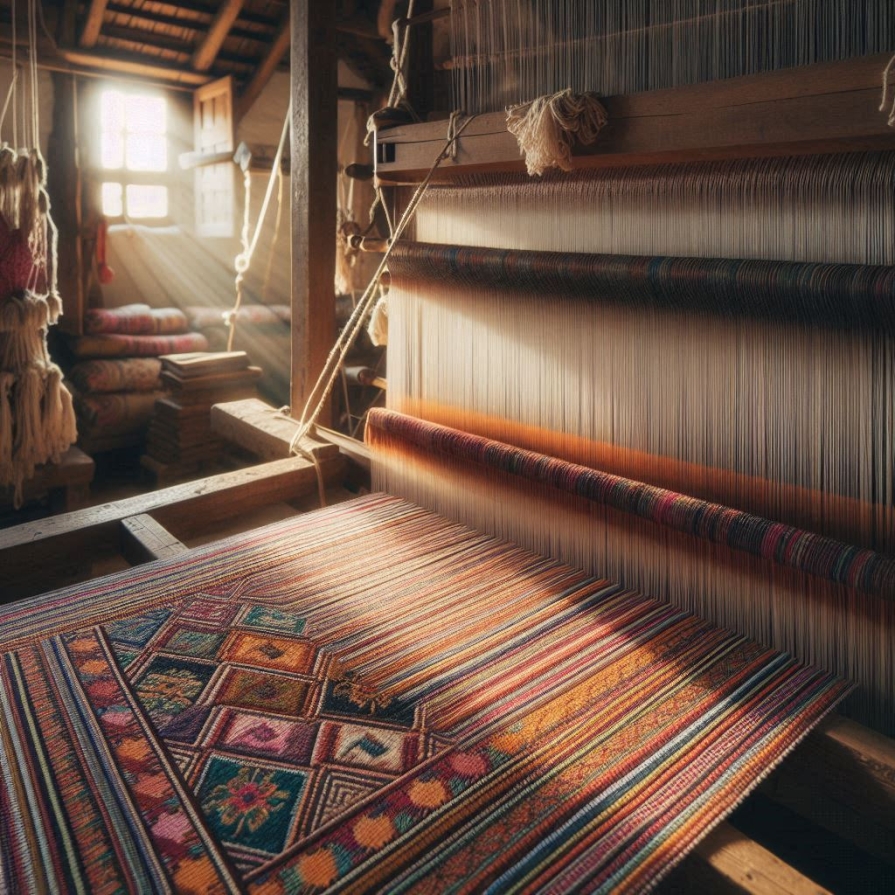
At its core, weaving involves the interlacing of two sets of threads: the warp (the vertical threads held under tension) and the weft (the horizontal threads woven through the warp). This basic yet versatile structure allows for an almost infinite variety of patterns, textures, and designs. The type of loom, the materials used, and the techniques applied all influence the final outcome.
Historical Context
Weaving’s history is rich and varied, with evidence of woven textiles dating back to ancient civilizations. From the intricate tapestries of medieval Europe to the vibrant saris of India, weaving has been used to create functional, decorative, and ceremonial items. Different cultures have developed unique weaving traditions, techniques, and motifs, each contributing to the vast tapestry of global textile art.
Exploring Colour in Weaving
Colour is a powerful element in weaving, capable of transforming a simple fabric into a striking piece of art. The choice of colours, their combinations, and their placement within the weave can evoke emotions, convey messages, and create visual interest.
Dyeing Techniques
The process of adding colour to yarns is an art in itself. Traditional dyeing methods, such as using natural dyes derived from plants, insects, and minerals, have been practiced for centuries. These methods are celebrated for their rich, earthy tones and their sustainable nature. Indigo, madder, and cochineal are just a few examples of natural dyes that have been used historically to achieve deep blues, vibrant reds, and rich purples.
In contrast, modern synthetic dyes offer a broader spectrum of colours and greater consistency, allowing for precise colour matching and repeatability. Both natural and synthetic dyes can be used in a variety of dyeing techniques, including immersion dyeing, where yarns are soaked in dye baths, and space dyeing, where different sections of yarn are dyed different colours, creating a variegated effect.
Colour Theory and Design
Understanding colour theory is essential for weavers aiming to create harmonious and dynamic textiles. The colour wheel, with its primary, secondary, and tertiary colours, serves as a guide for creating pleasing colour schemes. Complementary colours, which lie opposite each other on the colour wheel, create high contrast and vibrant designs. Analogous colours, situated next to each other, offer a more subtle, harmonious look.
Weavers can also experiment with value (the lightness or darkness of a colour) and saturation (the intensity of a colour). By varying these aspects, a weaver can add depth and dimension to their work. For instance, using a combination of light and dark shades can create a sense of depth and perspective, while combining highly saturated colours can result in a bold, eye-catching piece.
The Role of Texture in Weaving
Texture adds a tactile dimension to woven textiles, making them not only visually appealing but also engaging to touch. The interplay of different yarns, weaves, and finishing techniques can create a wide array of textures, from smooth and sleek to rough and rugged.
Yarns and Materials
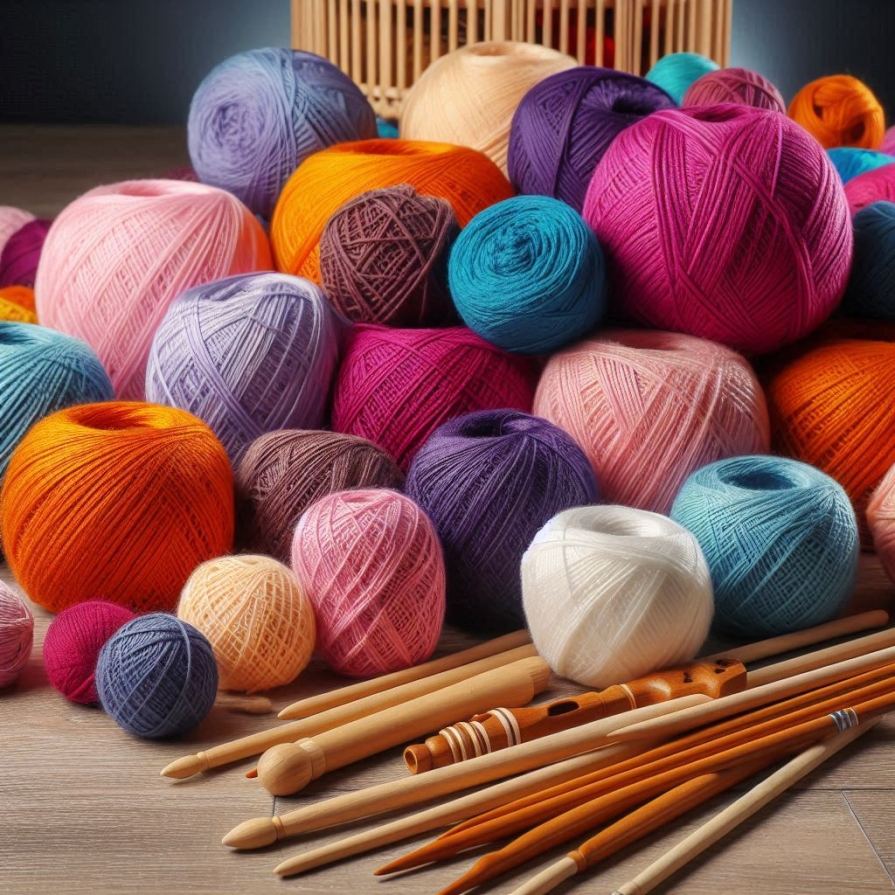
The choice of yarn is crucial in determining the texture of the final textile. Natural fibers such as cotton, wool, silk, and linen each have distinct characteristics. Cotton, for instance, is soft and durable, making it ideal for everyday textiles. Wool, with its crimped fibers, offers warmth and elasticity, perfect for winter garments. Silk, known for its sheen and smoothness, adds a touch of luxury, while linen, with its crisp texture, is favored for summer wear.
In addition to natural fibers, synthetic fibers like nylon, polyester, and acrylic are also used in weaving. These materials can mimic natural fibers or offer unique properties such as increased strength, elasticity, and resistance to moisture and stains.
Weave Structures
The structure of the weave itself plays a significant role in the texture of the fabric. Basic weaves like plain weave, twill, and satin each have distinct textural qualities. Plain weave, the simplest form, creates a balanced and uniform texture. Twill weave, characterized by diagonal lines, offers a softer drape and increased durability. Satin weave, with its smooth surface and glossy finish, adds an element of elegance.
More complex weave structures, such as jacquard and dobby, allow for intricate patterns and textures. Jacquard weaving, in particular, can produce highly detailed designs, from florals to geometric patterns, creating textiles that are both visually and texturally rich.
Combining Colour and Texture
The true artistry in weaving lies in the skillful combination of colour and texture. When these elements are thoughtfully integrated, they enhance and complement each other, resulting in textiles that are both beautiful and functional.
Creating Visual Interest
One way to combine colour and texture is by using contrasting elements. For example, a smooth, shiny yarn in a bright, vibrant colour can be woven alongside a matte, textured yarn in a neutral tone. This contrast draws the eye and creates a dynamic interplay between the different sections of the fabric.
Another approach is to use a monochromatic colour scheme with varying textures. By keeping the colour consistent but varying the texture, a weaver can create subtle yet sophisticated designs. The different textures catch the light differently, adding depth and complexity to the textile.
Pattern and Design
Pattern plays a crucial role in the integration of colour and texture. Stripes, checks, plaids, and other geometric patterns can be created by alternating different colours and textures. Floral and organic patterns, often achieved through complex weave structures like jacquard, can also be enhanced with carefully chosen colours.
Moreover, the placement of colours within the pattern can create different effects. Gradients, where one colour gradually transitions into another, can add a sense of movement and flow. Repeating motifs in different colours can create rhythm and balance within the design.
Cultural Significance and Symbolism
Throughout history, woven textiles have been used to convey cultural identity, social status, and personal expression. Different cultures have developed distinct styles and techniques, each with its own symbolic meanings.
Ethnic and Traditional Weaving
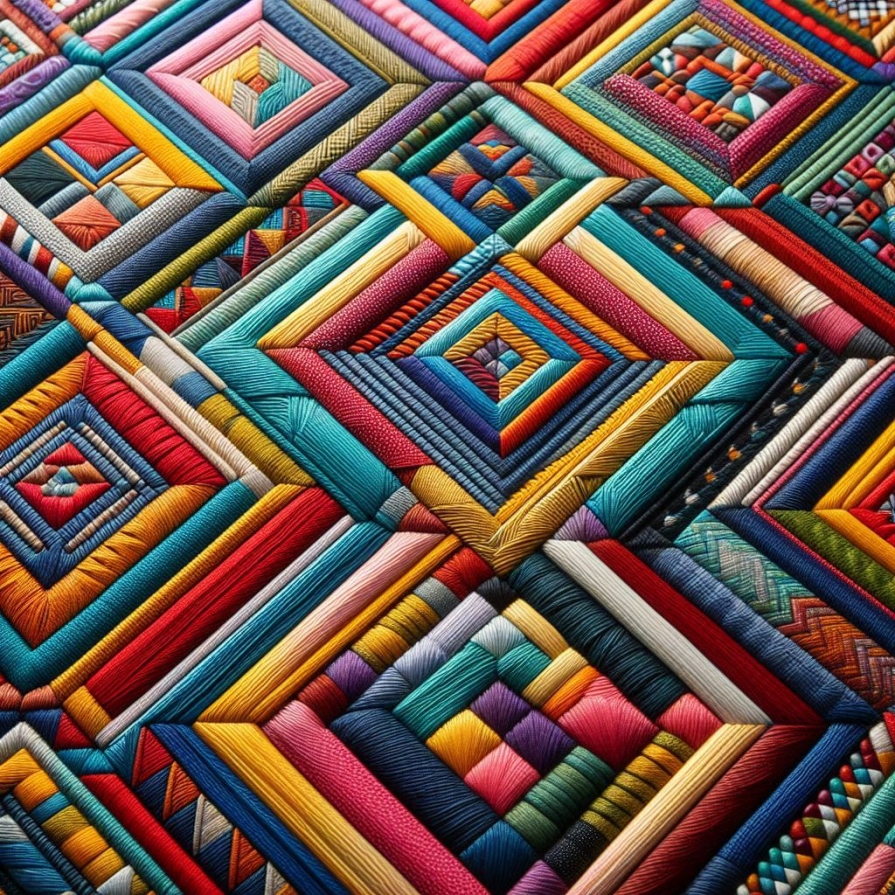
Many indigenous and ethnic communities around the world have rich weaving traditions that are deeply intertwined with their cultural heritage. For example, the intricate patterns of Navajo rugs and blankets often tell stories and represent spiritual beliefs. Similarly, the vibrant textiles of the Andean people of South America incorporate symbols and motifs that reflect their connection to nature and their cosmology.
In Africa, kente cloth, traditionally woven by the Asante and Ewe people of Ghana, uses bold colours and geometric patterns to signify different meanings. Each kente design has a name and a story, often reflecting historical events, proverbs, or personal virtues. The use of specific colours also carries symbolic meanings; for instance, gold represents royalty and wealth, while green signifies fertility and renewal.
Contemporary Interpretations
In contemporary weaving, designers often draw inspiration from traditional techniques and motifs, reinterpreting them in new and innovative ways. This blending of old and new creates a dialogue between past and present, honoring heritage while pushing the boundaries of the craft.
Modern weavers may also use their work to address social and political issues. Textiles can be a powerful medium for storytelling and activism, with colour and texture serving as tools to convey messages and evoke emotional responses. For example, a weaver might use rough, uneven textures and dark, somber colours to reflect themes of struggle and resilience.
The Future of Weaving
As we look to the future, weaving continues to evolve, embracing new technologies and materials while staying rooted in tradition. The rise of digital weaving technologies, such as computerized jacquard looms, allows for greater precision and complexity in design. These advancements open up new possibilities for creativity and innovation in textile art.
Sustainability and Ethical Practices
In response to growing concerns about environmental impact and ethical practices, many weavers are turning towards sustainable and ethical approaches. This includes using natural and organic fibers, eco-friendly dyes, and traditional techniques that minimize waste. The slow fashion movement, which emphasizes quality and craftsmanship over mass production, aligns with these values, promoting a more sustainable and thoughtful approach to textile creation.
Collaborative and Interdisciplinary Approaches
Weaving is also increasingly becoming a collaborative and interdisciplinary practice. Artists, designers, and craftspeople from different fields are coming together to explore new ways of working with textiles. This cross-pollination of ideas and techniques leads to innovative and unexpected outcomes, pushing the boundaries of what is possible in weaving.
For instance, collaborations between weavers and technologists have led to the development of smart textiles, which incorporate electronic components to create fabrics that can change colour, generate heat, or even monitor health. These cutting-edge innovations demonstrate the limitless potential of weaving as a dynamic and evolving art form.
Weaving, with its rich history and boundless possibilities, continues to be a vibrant and vital form of artistic expression. The interplay of colour and texture within woven textiles creates a unique language that speaks to both our senses and our emotions. By exploring and mastering these elements, weavers can craft textiles that are not only beautiful and functional but also meaningful and impactful.
As we move forward, the future of weaving looks bright, with opportunities for innovation, sustainability, and collaboration. Whether preserving traditional techniques or exploring new frontiers, weavers around the world continue to push the boundaries of their craft, weaving together the threads of creativity, culture, and community.

